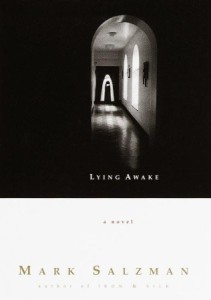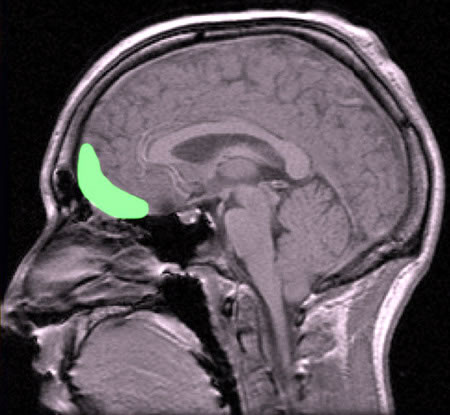It wasn’t until I took Behavioral Neuroscience with Dr. William Struthers that I began to ask the question of how our brains are involved in experiencing God. We know that we live in a physical world and experience things through physical processes involving receptors in the skin, nerve pathways in the spinal cord, and neurotransmitters in the brain. How then does God, reveal himself to us? One of the first texts Dr. Struthers called us to was Lying Awake by Mark Salzman. In this work of fiction, Salzman tells a story of a devout Catholic nun living in this century who experiences dramatic visions of Christ. Her visions, however, are accompanied by a terrible side effect; she gets excruciating headaches and has frequent seizures. It is later revealed that the woman has Temporal Lobe Epilepsy which explains her headaches, seizures, and unfortunately her visions. She then struggles to decide whether or not she should have surgery to fix the TLE.
The visions in Mark Salzman’s book are not unlike the experiences of Margery Kempe in the late middle ages. Kempe began experiencing vivid visions of Christ, Mary his mother, and various saints after the birth of her first child. It has been speculated that she too suffered from either Temporal Lobe Epilepsy or an extreme case of Postpartum Depression. What would it mean for Kempe to have learned that her experiences with Christ were nothing more than unbalanced chemicals in her brain? Would it have shaken her faith?

Photo Credit: Penguin Classics
A new field has emerged within the neuroscience community called Neurotheology. For the typical neuroscientist (if one even exists) this field is a joke; nothing more than a failed interdisciplinary combination. For a theologian, this new research area threatens to explain away miracles, visions, and other religious experiences. Some of the proposed research concepts are: what does an Electroencephalograph (EEG) or a Single-photon emission computed tomography (SPECT) of the brain look like while praying versus speaking in tongues? What areas of the brain light up during Functional Magnetic Resonance Imaging (fMRI) while someone is reading from the Bible verses reading a magazine?

Photo Credit: Dr. Andrew Newberg http://www.andrewnewberg.com/
A few of these studies have already been completed. Their results, while informative, are not surprising. Our brains do respond differently when we have or participate in religious experiences. Should this shake our faith to the core? For me it doesn’t. I believe in a God who is Lord over both the physical and spiritual world. I understand that I live in a particular moment of linear time in a physical world. It doesn’t surprise me that God would use our brains to speak to us. Our brains are, after all, the way we perceive and experience anything. An individual without a brain is incapable of sensation (or at least that is what is believed; a person without a brain is incapable of describing to a researcher subjective experiences).
Perhaps the ultimate fear isn’t whether God can use physical experience but whether he does. What if these religious experiences just happen without cause? What if God isn’t real at all? What if he’s just serotonin, dopamine, and a well-timed action potential propagated down the right axon?
This is where we reach the limit of science. No EEG or fMRI can disprove God’s existence. Science is incapable of quantitative measurement of anything outside the physical world (my apologies to the makers of the Dowsing Rod and Wigi Board). The discoveries made by scientists investigating religions impact on the brain find clues. For some, understanding how something works leads to the erroneous conclusion that there is no cause or purpose. For me I see clues that point to a God who is willing to reach down into this physical world and impact the lives of God’s followers in a way at one time immeasurable by scientific means. I marvel at the complexity of our synaptic circuitry and am directed to a greater, deeper sense of fear and awe at this God we have the ultimate privilege to serve.



